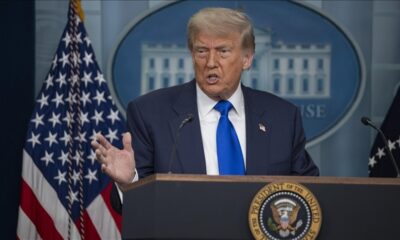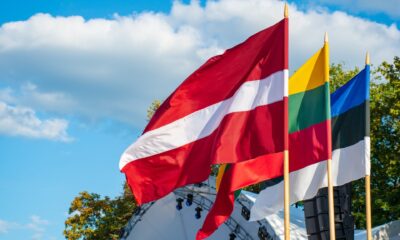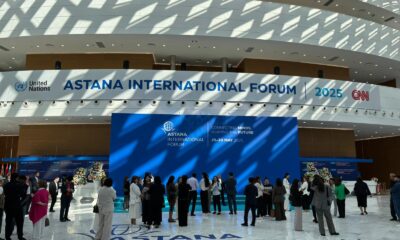Europe
Quo Vadis World Economy-III: The EU’s test with the interventionist state
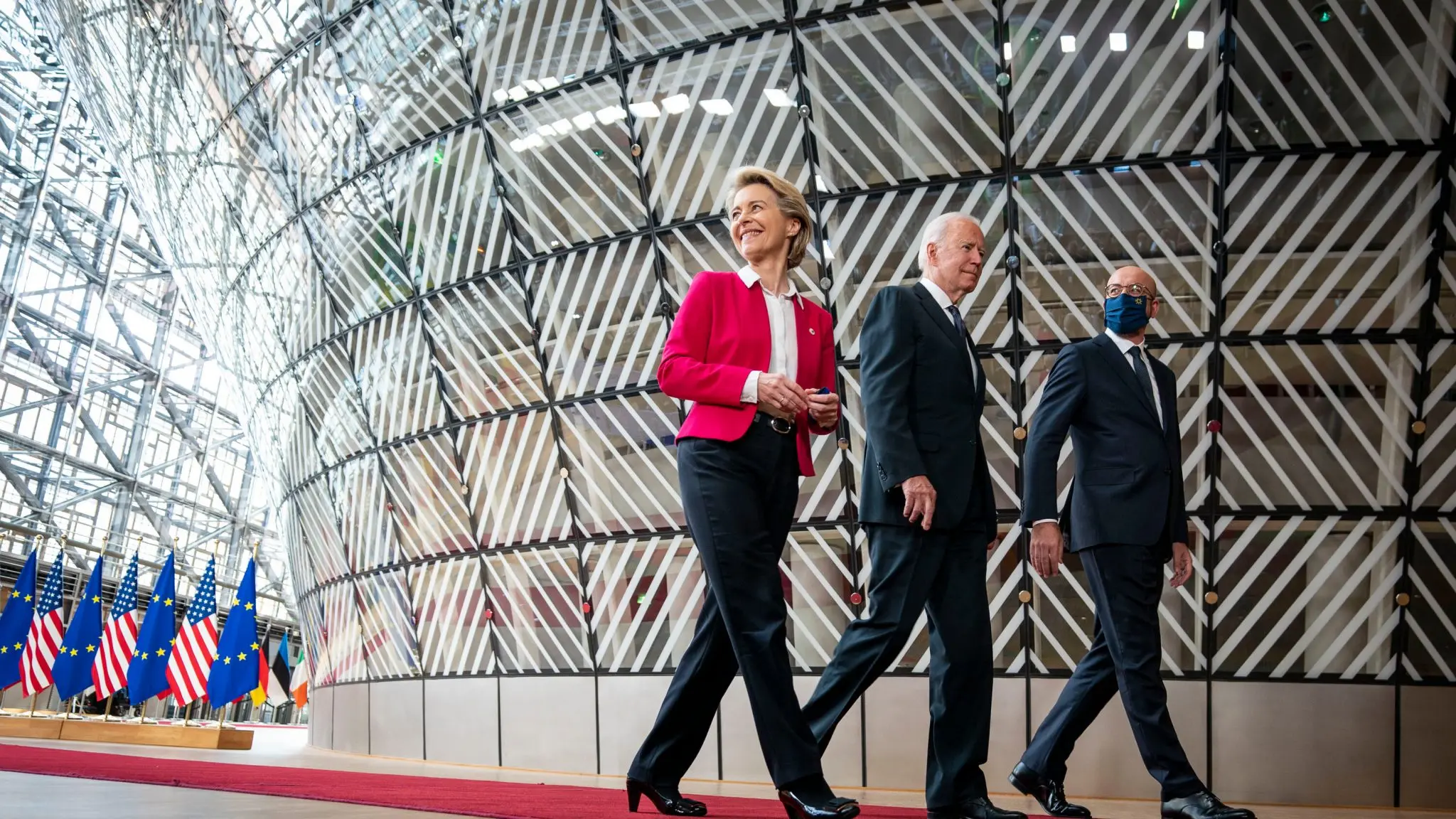
Both sides of the Atlantic reacted differently to the 2008–9 financial crisis. While the US and UK were pouring vast amounts of money into the market through enormously large rescue packages to bail out big banks. Evidently, this is a policy separate from the neoliberal doctrine of ‘fiscal discipline.’ On the other hand, Germany-led EU went for the neoliberal way. It did not only pursue the austerity measures that sparked social tensions throughout the continent and led to the rise of left and right populisms but also forced anti-austerity countries to implement them.
Now, while the ‘post-neoliberalism’ is being discussed, the United States is pursuing “protectionist” economic policies and seeking to involve its European and Asian allies in its struggle against China (and Russia). As a result of being severed with inexpensive Russian energy, the Inflation Reduction Act (IRA) and the CHIP Act are fueling the EU’s concerns about deindustrialization. On the one hand, indebted and having dependent competitiveness on state interventions, Southern and Eastern Europe and the richer Northern countries, not in favor of rescuing the poorer with joint EU loans, on the other, Brussels is awaiting much more challenging days.
Letter of objection to the European Commission
The European Commission has received a letter signed by Austria, Czechia, Denmark, Estonia, Finland, Ireland, and Slovakia.
Not signatories to the letter, Germany, Belgium, and the Netherlands also oppose the overall concept. The letter raises concerns about a proposed joint fund to support and shield the green industry from US subsidies. Instead of looking for new money, the letter demands, existing loan capacity should be utilized.
Only around 100 billion euros of the total of 390 billion euros of the post-pandemic recovery fund have been used, the seven countries recalled.
Central banks against governments
The tension between governments and central banks, which increase interest rates and employ monetary tightening to focus on ‘fighting inflation,’ is a prime illustration of the contention.
However, the epidemic years were a glorious time: The IMF, the World Bank, and national central banks all issued statements urging governments to “spend as much as you can.” It is believed that at that period, the United States pumped more than $2 trillion into the market via bond purchases and monetary expansion. During the same period, the EU helped the member countries stay afloat through joint borrowing and joint funds.
Now the disparity is widening, and it seems to be one of the most discussed topics among policymakers in the informal gatherings in the halls at the World Economic Forum (WEF) Davos summit.
Anticipating further inflationary pressure due to pandemics, geopolitical conflicts, and green transitions related to the ‘climate crisis,’ governments have prioritized spending more to ease the financial burden on consumers, notwithstanding the central banks argue and act the other way around.
Crying out “fiscal authorities must do more” in recent years, central banks seem to have received their wish, although in an unexpected form.
Furthermore, this difference, called “fiscal authority against monetary authority,” has not yet wholly appeared. According to IMF economist Gita Gopinath, the limits of tension between fiscal and monetary authorities have not been tested.
The European Union (EU) may be the only place where the rising tension is more visible. Member governments continue to unveil substantial aid packages to their citizens battling with energy and food inflation despite the European Central Bank’s aggressive interest rate increases to combat inflation.
Summary: Government aid packages
In the context of energy, the diverging monetary and fiscal policies are pretty evident.
To help with grid fees, a significant part of electricity bills, the Austrian government, for instance, is getting ready to offer a new aid package. In addition to the initial support package of 475 million euros until the middle of 2024, Vienna has revealed intentions to distribute an extra 200 million euros. Thus, the government will pay 80% of the network/infrastructure costs.
Due to rising wholesale power prices, France’s electricity and natural gas regulator CRE has suggested a 108 percent hike in residential electricity rates.
Despite the CRE’s recommendation, the French government only raised the rate by 15% with subsidies for electricity prices.
Households, small local governments, and micro-enterprises with annual revenues of less than 2 million euros are eligible for the government’s “tariff shield” system.
Greece, one of the EU’s weakest economies, even gave subsidies on energy bills to 840 million euros. Citing a fall in gas prices, Kostas Skrekas, the minister of energy, announced that subsidies would be reduced to 95 million euros.
Is the energy crisis over?
Governments seem to have concluded that the worst is over, thanks to the mild winter and energy costs plummeting.
For example, RTE, the French power grid operator, recently announced the risk of power cuts left behind. According to RTE, this is due to increased nuclear power output and the mild winter. RTE has reported that the utilization of nuclear energy capacity has reached 70%.
Once again, the mild winter seems to be reducing power use. This year’s consumption was 8.5% lower than the average for the same period of 2014-2019. Also decreasing by 13% was the use of natural gas.
Indeed, natural gas’s MW/s price on the Dutch stock market dropped from 200 euros to 70 euros in January. Moreover, 81 percent of the EU’s gas storage tanks are still full, and it is anticipated that this rate for Germany is close to 90%.
Still, Klaus Müller, the president of Germany’s federal grid agency Bundesnetzagentur, pointed out that if many heat pumps and charging stations continue to be installed, local power cuts will become a source of concern.
In order to avoid power outages, TransnetBW, the grid operator in southern Germany, has asked residents to decrease their energy use in the evenings.
South Holland has similar problems. The grid is reportedly overloaded due to balancing demand and integrating new energy sources.
For this reason, inconveniences occur in the ‘transition to green energy,’ an objective of these two countries. The load on the electricity grid is growing as demand for industrial heat pumps and charging stations increases. Considering a 27 percent growth in demand for electric cars in Germany alone, it is next to impossible to expect this problem to be solved quickly. In the short term, major transmission issues, particularly on local low-voltage lines, are anticipated to arise in Germany. From 2020 to 2021, investment in distribution networks had a 10% increase, much below the expected 40% rise.
Eurelectric predicts that in 2021, between 375 and 425 billion euros would need to be invested in energy infrastructure to render it endurable for the new electrification mechanisms. In addition, the inflationist change in electrical equipment over the last two years makes this prediction seem unduly optimistic.
The flutters of Brussels
The 0.2 percent shrinkage in Germany, the largest economy of the Old Continent, in the last quarter of 2022 is another indication that things are not going well. However, Olaf Scholz has pointed to declining energy prices and a mild winter as evidence that the recession is beginning to turn around.
One of the largest steel makers in Germany and the world, Thyssenkrupp, has urged the German government to match Washington’s “protectionism,” a sign that warning bells are ringing. Martina Merz, CEO of the conglomerate, emphasized the need to succeed in the green transition without deindustrializing the continent. Highlighting the sufferings of the steel, cement, and chemical industries from higher energy costs, Merz said that “tomorrow’s markets are being carved up now.”
Carved-up markets are ominous words that require no explanation. The European Commission’s “Green Deal Industrial Plan” seems like another dead-cat bounce by Brussels before the EU leaders’ summit to be held next week. The proposed draft urged Europe and its allies to combat “unfair subsidies” and “prolonged market distortions.” The United States and China seem to be the primary targets of this battle.
The loosening of the EU’s government incentives system appears vital for Europe in the ‘green energy transition.’ EU members have the same right as governments outside the EU to provide subsidies to businesses operating within the union.
The combined economic might of Germany and France, of course, exists here as well. Recalling that German and French industries get 77% of EU-wide state incentives (€356 billion and €162 billion, respectively), financially weak nations in the south, such as Italy, Spain, and Portugal, are once again bringing up joint EU borrowing for subsidies. The German and Dutch coalition, on the other hand, blame poor countries for seeking ‘grants’ rather than using the money in the pandemic recovery fund as a loan.
Moreover, the fragmentation is not only between EU countries but indeed between regions. Craig Douglas, the founder of World Fund, for instance, says the discrepancies between the specific buckets of capital in Europe are sharp, and there is more regional capital available in Aachen or Bavaria than in Paris if they want to build a manufacturing facility.
‘Europe is in panic mode’
Fear of the escape of investments created by the IRA has gripped all of Europe. “Europe is in panic mode,” Paul Tang, a Dutch member of the European Parliament, told the Financial Times (FT).
Panic is not a temporary problem. Concerns over the very fundamentals of the EU’s economic model are not comparable to this panic. Long before the IRA, the pandemic and the Ukraine crisis have already started to undermine the economic orthodoxy of the German-led EU.
Mark Rutte, the Dutch prime minister, is among those drawing attention to this, reminding that a more ‘interventionist’ approach could have a long-term impact far beyond the IRA.
However, the genie is out of the bottle. Ineligible for state subsidies, several EU-based manufacturers decide to relocate their operations to the other side of the Atlantic. These are by no means a few. Since the transition to “green capitalism” calls for significant investments, state interventions are crucial in managing and directing these investments and convincing society with the carrot and stick for this shift. A state that provides only fiscal discipline and austerity is no longer acceptable. Therefore, without German-French intervention, the goal of “strategic autonomy of Europe,” which has been brought up specifically by France, is unrealistic.
Moreover, the EU is still far away from the ‘clean technology’ investments and initiatives flowing to Asia and North America. In other words, the challenge comes not only from the United States but also from Asia, particularly China. In the next article, I put an end to the with a piece focusing on Asia and ‘developing countries,’ especially China.
Europe
Europe’s largest port prepares for potential war with Russia
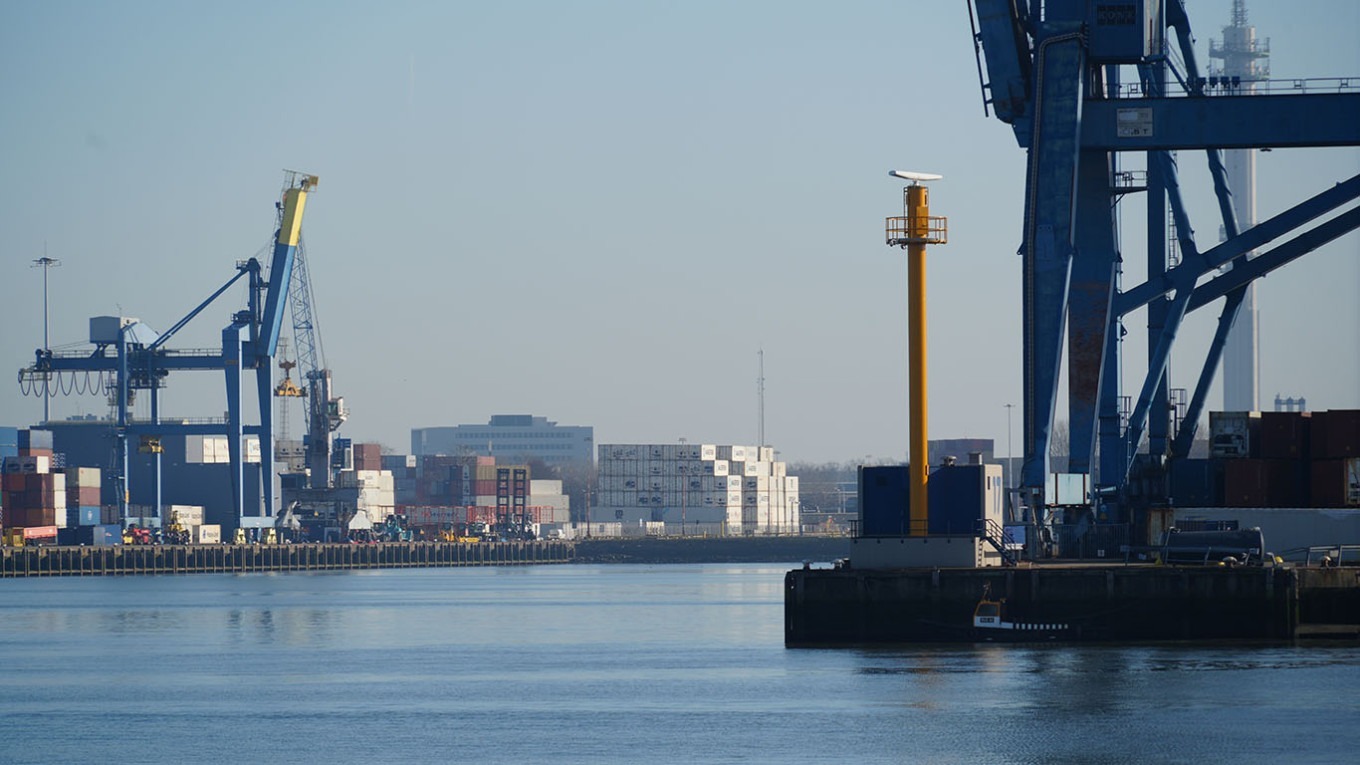
According to the Financial Times, the Port of Rotterdam in the Netherlands, Europe’s largest port, has begun allocating space for NATO military cargo and planning routes for weapons shipments in preparation for a potential war with Russia.
Landing exercises will also be conducted at the port. Although the port has previously handled weapons shipments, it did not have a dedicated pier for this purpose, even during the peak of the Cold War. Under the new plan, a section of the container terminal will be refitted to allow for the safe transfer of ammunition from one ship to another.
Port Director Boudewijn Simons stated that military shipment logistics will be coordinated with the neighboring Port of Antwerp in Belgium, the EU’s second-largest. Simons emphasized that this cooperation will be particularly important for receiving cargo from the US, the UK, and Canada. “We increasingly see each other less as competitors. Of course, we compete when necessary, but we work together where we can,” said Simons, adding that when large volumes of weapons need to be transported, Rotterdam will ask Antwerp or other ports to handle part of the load, and vice versa.
The Dutch Ministry of Defence confirmed in a statement in May that the port would provide space for military shipments at NATO’s request. This decision was made within the framework of the European Union’s rearmament program, through which the bloc aims to reduce its defense dependency on the US.
The Port of Rotterdam is also used as a center for storing strategic oil reserves. In this context, Simons called on European countries to take precautions regarding other critical resources such as copper, lithium, and graphite. The EU is expected to present a “stockpiling strategy” on July 8, which will cover medical supplies, critical raw materials, energy equipment, food, and water.
Europe
Germany’s SPD faces ‘Russia rebellion’ at party congress
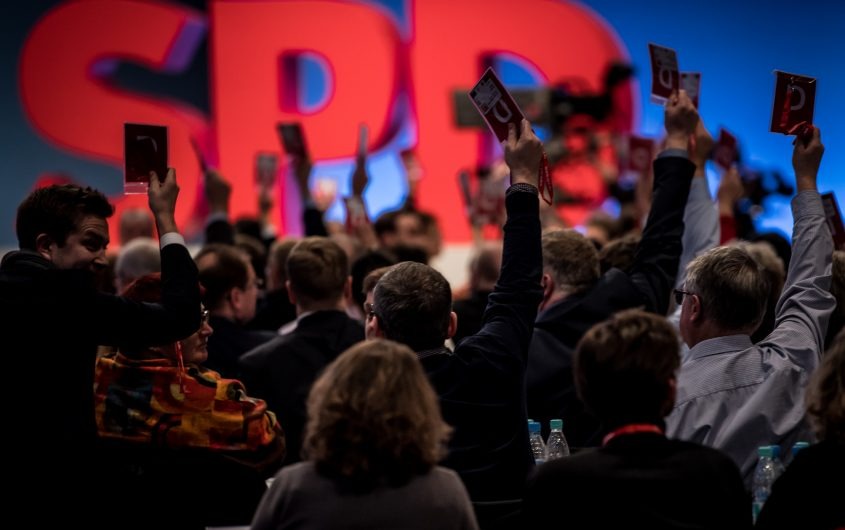
Divisions within Germany’s Social Democratic Party (SPD) over rearmament and relations with Russia are set to culminate at its upcoming congress, where party leader and finance minister Lars Klingbeil faces backlash from a faction within his party.
According to a report in the Financial Times, one of the critics of the SPD leadership is the eldest son of former SPD Chancellor Willy Brandt, who still holds significant influence over the party with his Ostpolitik (Eastern Policy), a policy of rapprochement with the Soviet Union at the height of the Cold War.
Peter Brandt, a 76-year-old historian, has co-signed an SPD motion criticizing the government’s rearmament plans and advocating for “de-escalation and a gradual return to cooperation with Russia.”
The manifesto, published ahead of this week’s SPD party conference, states, “There is a long road ahead to return to a stable order of peace and security in Europe.”
While acknowledging that strengthening the defense capabilities of Germany and Europe is “necessary,” the authors emphasize that these efforts must be “part of a strategy aimed at de-escalation and the gradual restoration of trust, not a new arms race.”
Peter Brandt told the Financial Times that Klingbeil approved the new defense spending increase “without checking if it was the majority view.” He added, “This is a problem. There isn’t as clear a stance among the members as is reflected in the leadership.”
The criticism comes as Klingbeil, deputy chancellor in the coalition government led by Christian Democrat Friedrich Merz, prepares a major “funding injection” for the military, aiming to increase the country’s defense budget by 70% by 2029.
Brandt’s words are a reminder that many Social Democrats remain reluctant to fully embrace the country’s “Zeitenwende” (turning point) in defense policy, announced by former SPD Chancellor Olaf Scholz following the 2022 invasion of Ukraine.
The internal rebellion could create problems for Klingbeil, who negotiated the coalition agreement with Merz after the SPD’s worst-ever election result in February. The dissenters could make it difficult for the government, which holds a slim majority of just 13 seats, to pass legislation on the budget, arms deliveries, and the planned return to compulsory military service.
Uwe Jun, a political scientist at the University of Trier, noted that while the rebels are not a majority in the SPD, they are not a small minority either. “There is a long tradition in the SPD of people who came from the peace movement of the 1970s and 1980s,” he said. “They are critical of anything related to the military.”
Klingbeil’s reorganization of the party leadership following the election fiasco has further fueled the controversy. The 47-year-old politician is accused of consolidating his power after replacing 66-year-old Rolf Mützenich as the head of the SPD parliamentary group. Mützenich is also a signatory of the manifesto.
“Personal and political tensions are also playing a role,” said Gesine Schwan, a political scientist and SPD member who was asked to sign the motion but declined.
Klingbeil, who grew up after the fall of the Berlin Wall, has tried to shift the party’s foreign policy stance. In a series of speeches and editorials in 2022, he admitted that the party had “failed to realize that things in Russia had already been moving in a very different direction.”
The manifesto’s signatories argue that the pursuit of peace must be the priority. Ralf Stegner, who helped draft the text, caused controversy last month when it was revealed he had traveled to Azerbaijan in April to meet with Russian officials, including one under EU sanctions.
Stegner, 65, who at the time served on the parliamentary committee overseeing Germany’s intelligence service, defended the meeting, stating that MPs from Merz’s CDU had also attended to keep communication channels with Moscow open.
“You have to keep talking to everyone,” Stegner told the Financial Times. “The insinuation that this means agreeing with what others say or being a secret agent for a third party is, of course, complete nonsense.”
Stegner’s stance reflects the continued nostalgia within the SPD for Willy Brandt’s Ostpolitik. According to a party insider, members who joined the SPD under Brandt’s leadership, now in their 60s, make up 58% of the membership.
Peter Brandt, who said he never fully shared his father’s views, explained that he signed the manifesto because he believes the Russian threat is exaggerated.
“I do not agree with the idea that Russia will attack NATO,” said the younger Brandt. “The Russian army has shown weakness in the Ukraine war.”
He added that NATO is “currently superior to the Russian army in conventional terms, even without the Americans,” and called NATO’s goal of dedicating 5% of GDP to defense “unreasonable.”
Klingbeil, however, pointed out that Willy Brandt, who won the Nobel Peace Prize in 1971, also oversaw large defense budgets exceeding 3.5% of GDP.
“And ultimately, I don’t think anyone would associate Willy Brandt with someone who focused solely on military matters,” the SPD leader remarked.
Jun said Klingbeil symbolizes the “new school of thought within the party,” adding that the SPD’s younger MPs are “quite pragmatic” on Russia.
But Schwan believes Klingbeil will have to contend with the “old guard” for a while longer. “De-escalation, security, and peace policy are still part of the SPD’s DNA,” she said.
Europe
New MI6 chief’s grandfather was a Nazi collaborator known as ‘The Butcher’
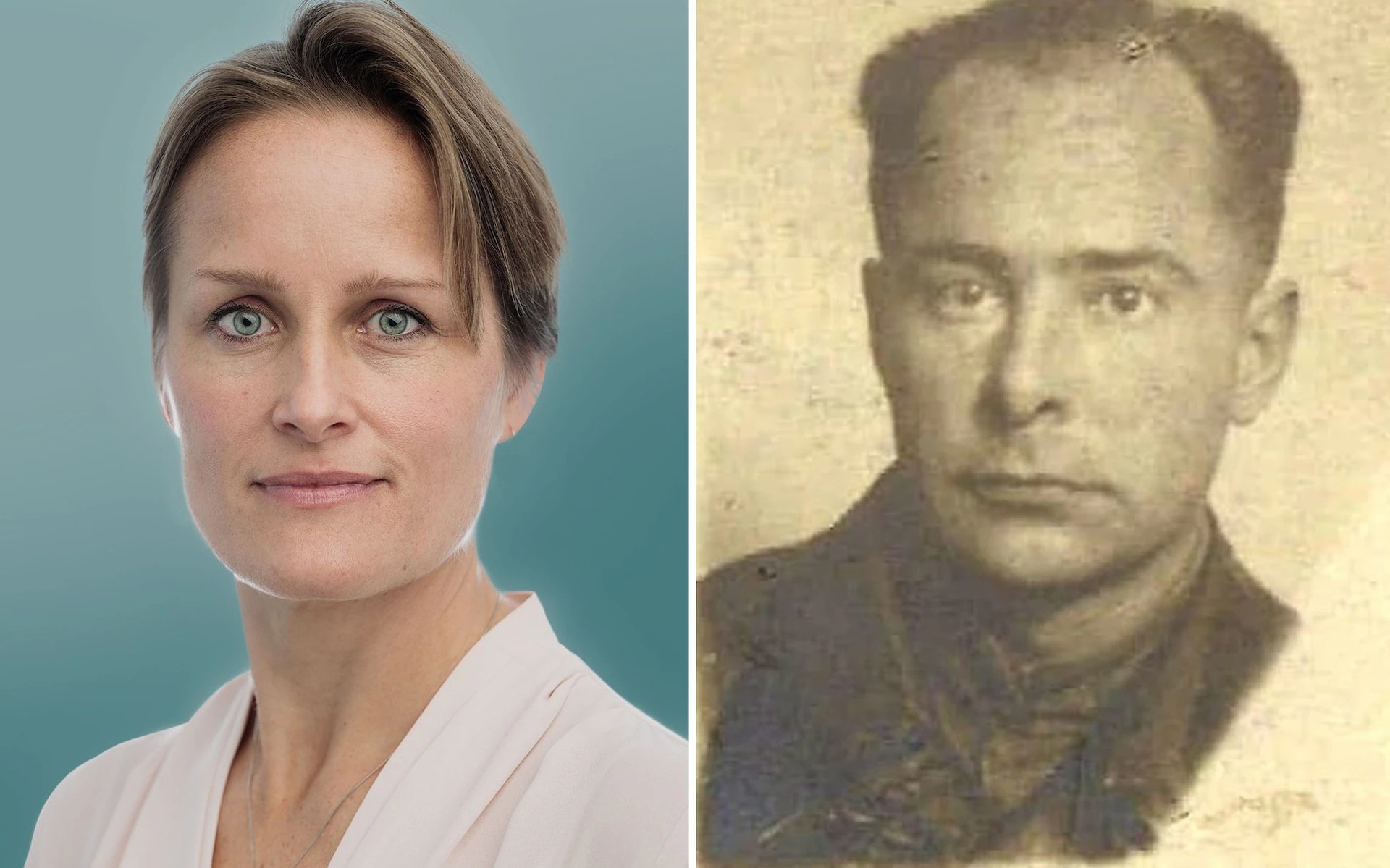
The grandfather of the new head of MI6 was reportedly a Nazi spy known as “The Butcher” in German-occupied Chernihiv.
Blaise Metreweli was appointed earlier this month as the first female spy chief in the 116-year history of the Secret Intelligence Service (MI6).
According to documents cited by the Daily Mail, Metreweli’s grandfather, Constantine Dobrowolski, was a Nazi collaborator who boasted of killing Jews.
The newspaper reports that Dobrowolski, a Ukrainian, defected from the Red Army to become a chief informant for the Nazis and Adolf Hitler in the Chernihiv region.
Metreweli, 47, never knew her grandfather. He remained in Nazi-occupied Ukraine when his family fled in 1943 as the Red Army liberated the area.
Documents found in German archives reveal that Dobrowolski was known to the Nazis as “Agent No. 30.”
At one point, the Soviet Union placed a 50,000-ruble bounty on Dobrowolski’s head (approximately £200,000 today), labeling him “the greatest enemy of the Ukrainian people.”
According to the newspaper, Dobrowolski sought revenge against Russia for killing his family and confiscating their property during the 1917 revolution.
One file reportedly contains a handwritten letter from Dobrowolski to his Nazi superiors, signed “Heil Hitler.”
In another file, he is said to have boasted that he “personally participated in the destruction of the Jews” and had killed hundreds of Ukrainian soldiers.
A spokesperson for the Foreign, Commonwealth & Development Office commented on the allegations, stating, “Blaise Metreweli did not know and had never met her father’s father. Blaise’s ancestors are characterized by conflict and division, and like many with Eastern European roots, she has a history that is only partially understood.”
The spokesperson suggested that it is “precisely this complex heritage” that “contributes to Blaise’s determination to prevent conflict and protect the British people from the modern threats of hostile states” as the next head of MI6.
Metreweli grew up abroad before studying anthropology at Cambridge, where she was part of the winning team in the 1997 Boat Race.
Joining MI6 in 1999, Metreweli served for two decades in Europe and the Middle East.
Metreweli currently holds the position of “Q,” the head of the technical section of MI6, made famous by the James Bond films.
-
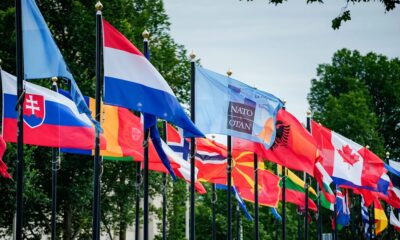
 Diplomacy2 weeks ago
Diplomacy2 weeks agoNATO summit focuses on arms race in the Silicon Valley age
-
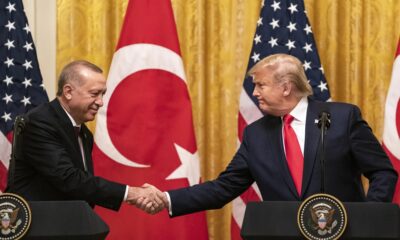
 Diplomacy2 weeks ago
Diplomacy2 weeks agoErdoğan to meet Trump at NATO summit to mend relations
-
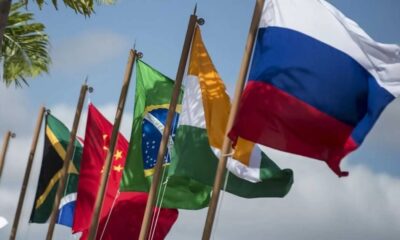
 Diplomacy2 weeks ago
Diplomacy2 weeks agoBRICS internal trade volume hits the $1 trillion mark
-

 Asia2 weeks ago
Asia2 weeks agoJapan’s prime minister skips NATO summit amid alliance strain
-

 Diplomacy2 weeks ago
Diplomacy2 weeks agoGerman arms industry expands presence in India amidst geopolitical shifts
-

 America2 weeks ago
America2 weeks agoPentagon divided over military priorities in Asia and the Middle East
-
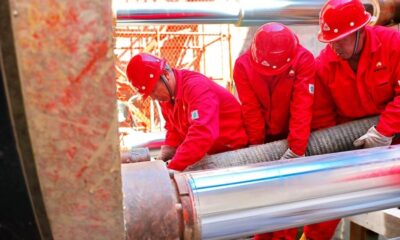
 Russia2 weeks ago
Russia2 weeks agoChina’s energy pivot: Power of Siberia 2 gains traction after Iran-Israel conflict
-
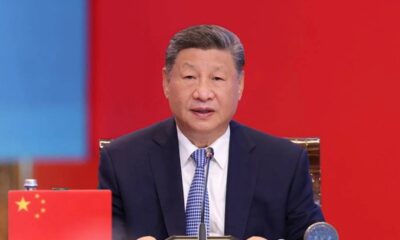
 Diplomacy2 weeks ago
Diplomacy2 weeks agoXi Jinping to miss BRICS summit in Rio for the first time


